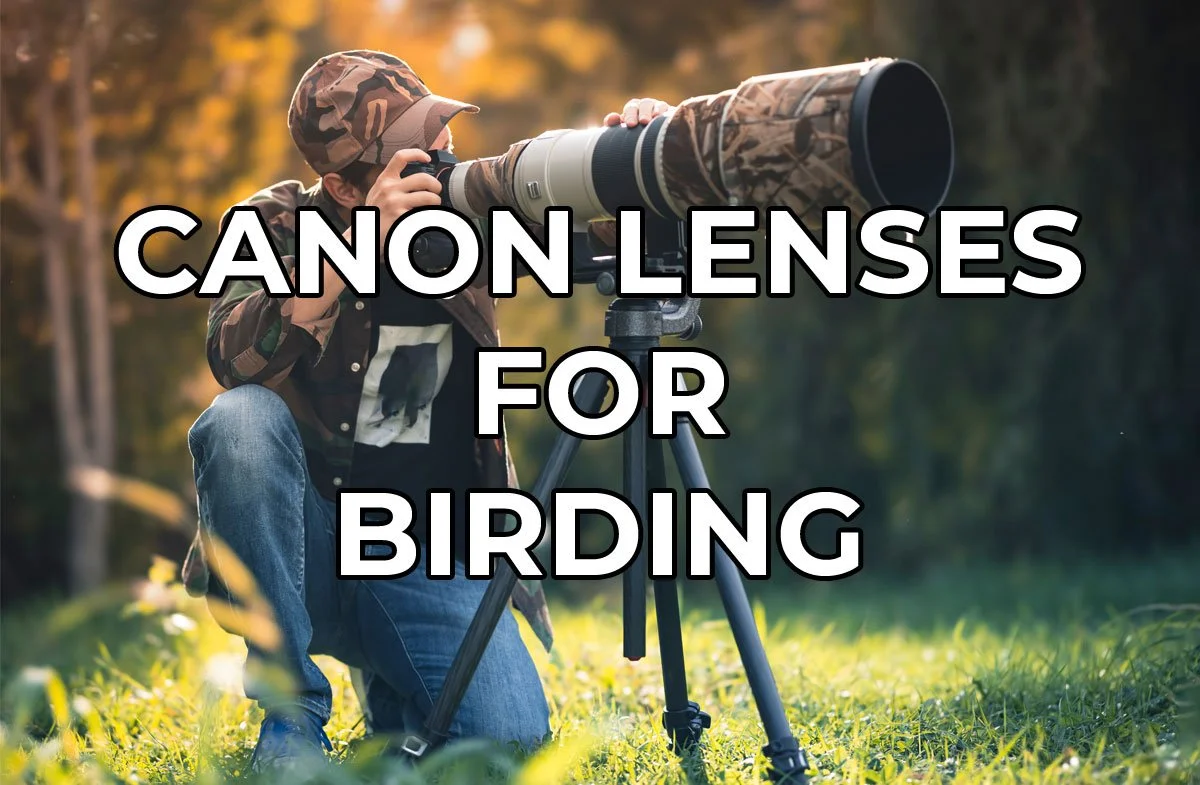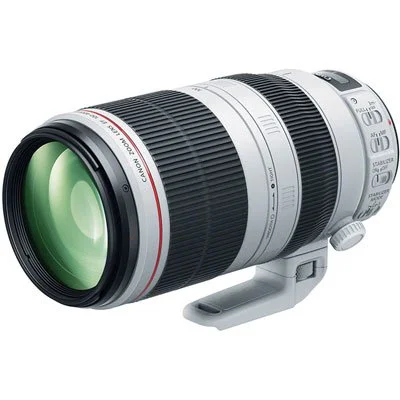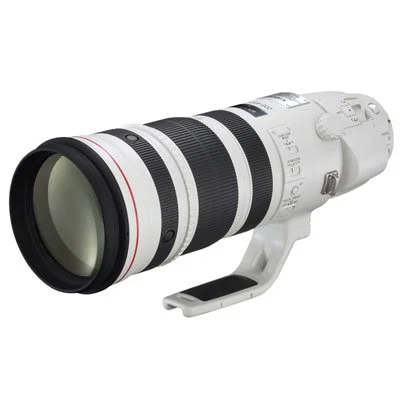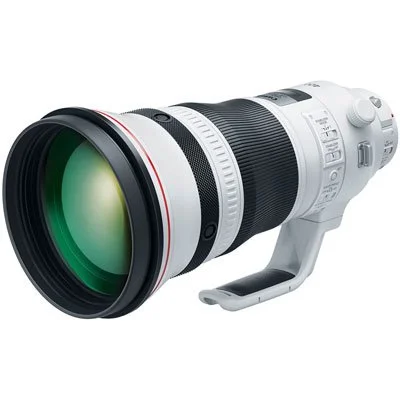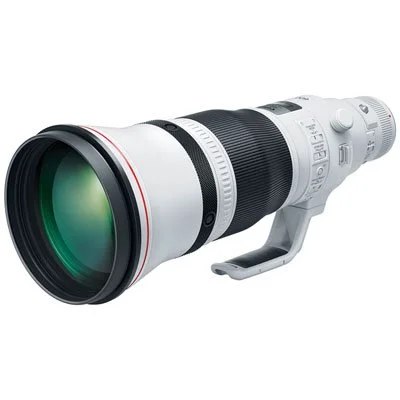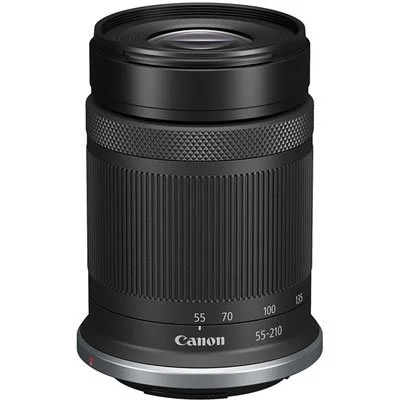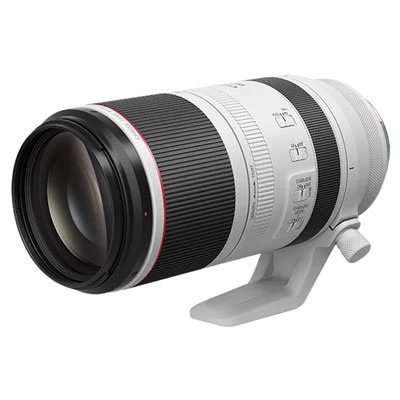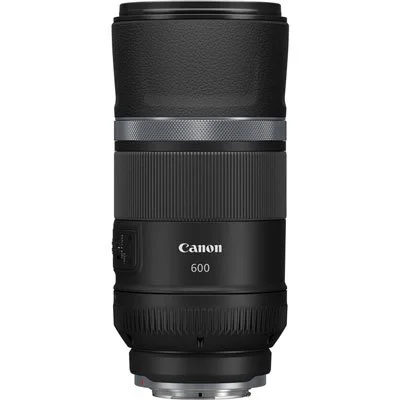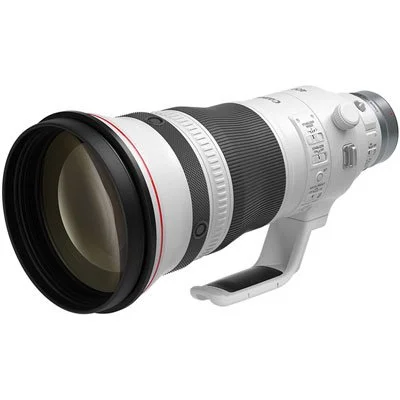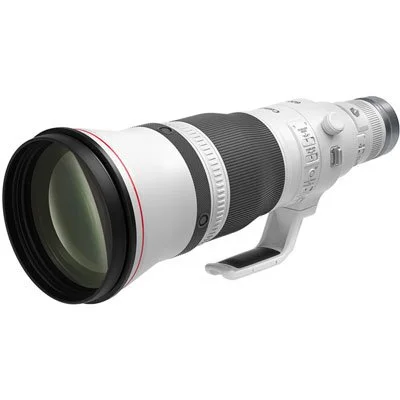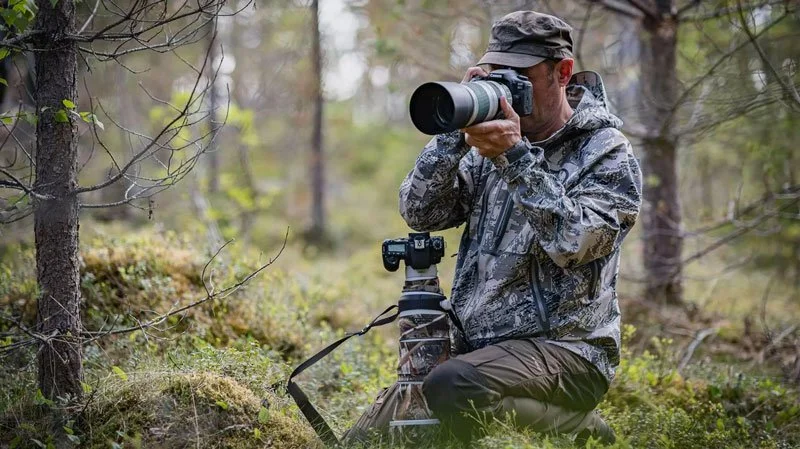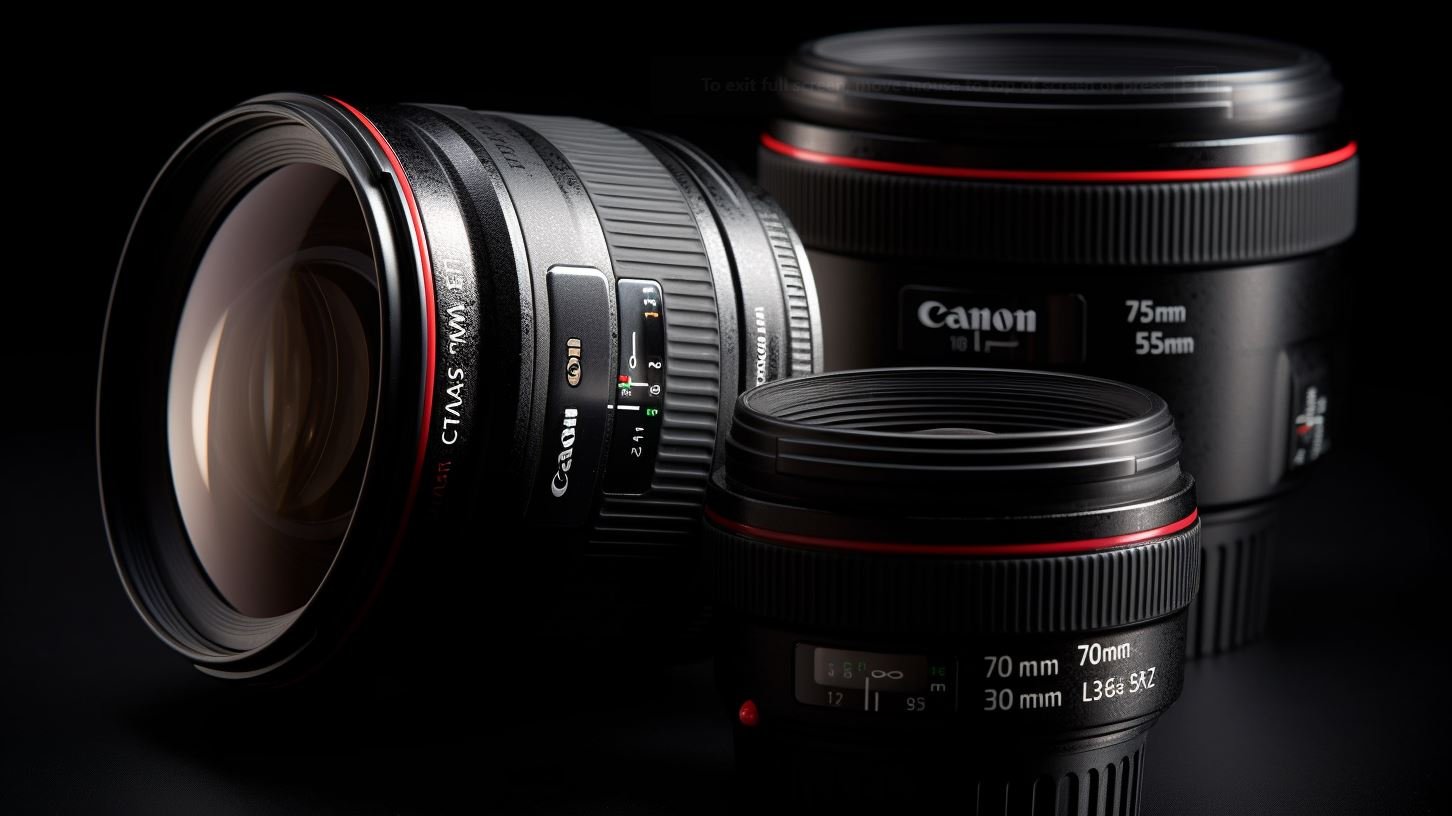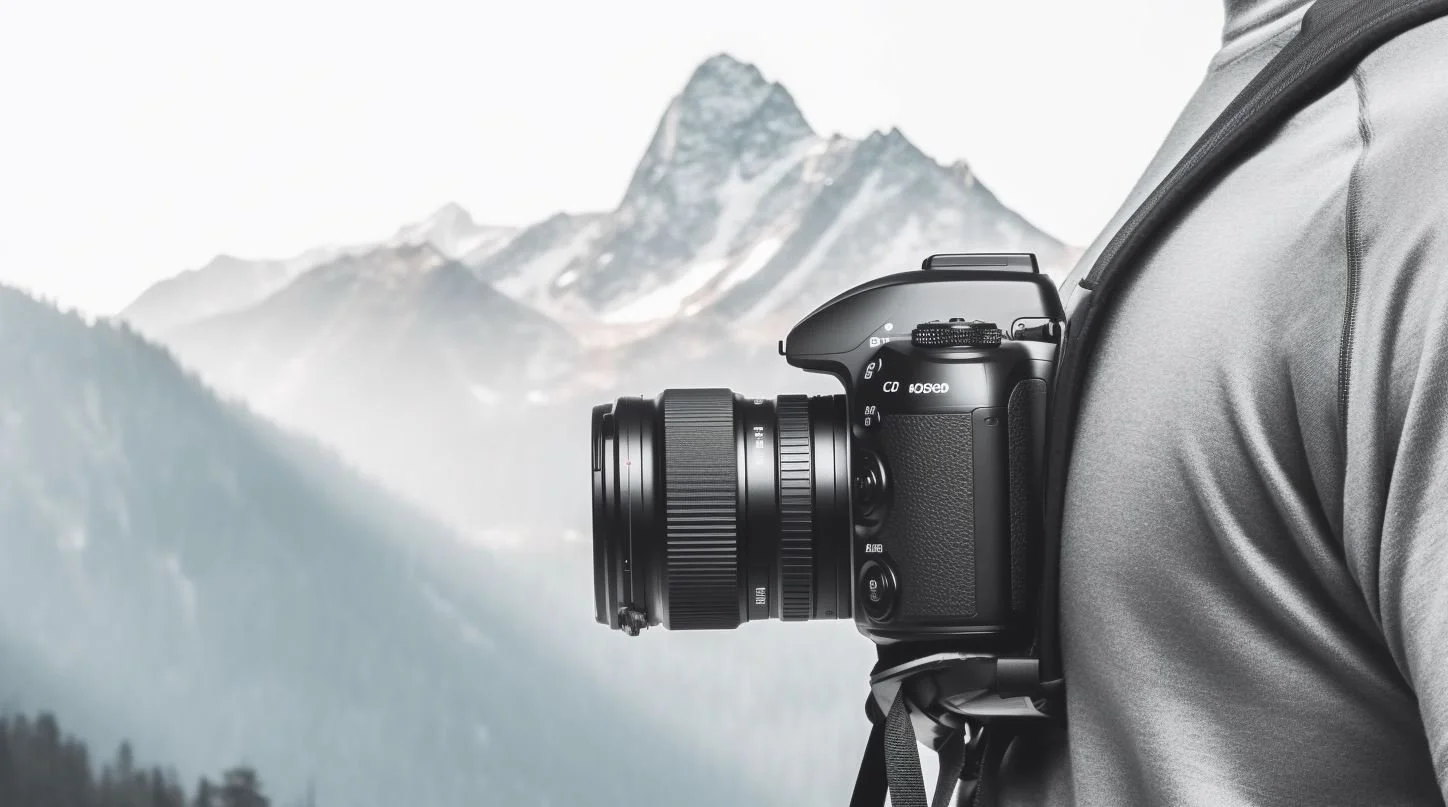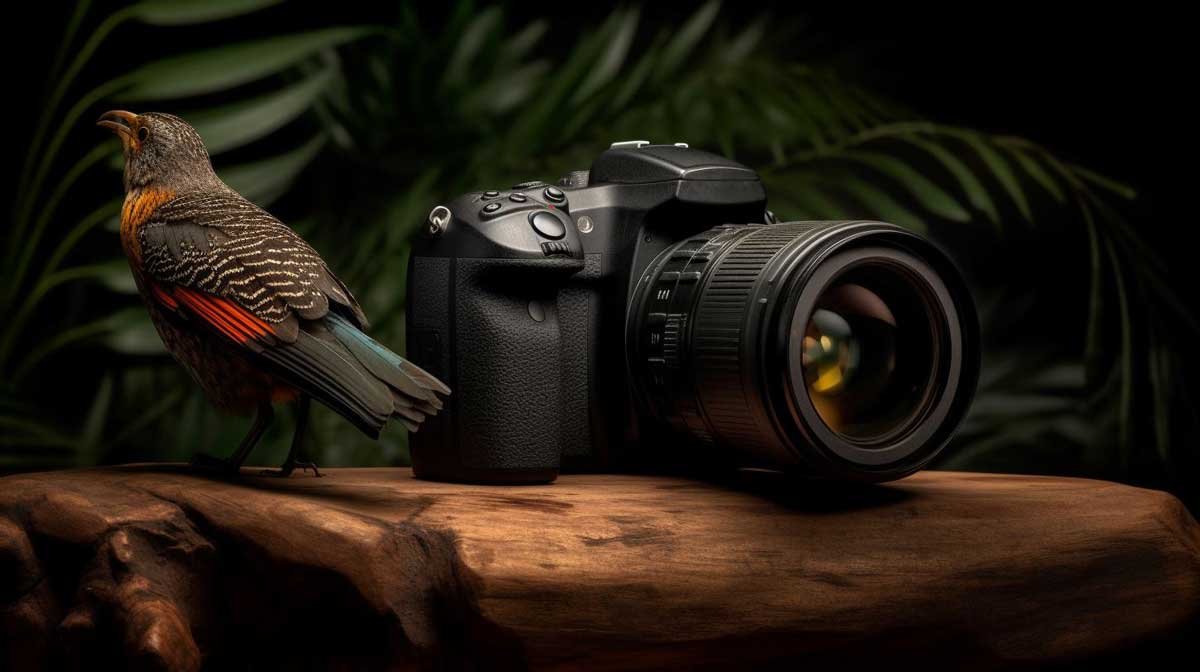Best Canon Lens for Bird Photography
Learn how to choose the best lens for bird photography and which ones are best for Canon systems.
Bird photography can be one of the most challenging genres of photography out there. Birds are fast-moving, often small, and tend to be quite far away from the photographer.
Because of this, it's important to have the right equipment in order to capture stunning images of our feathered friends.
One of the most important pieces of equipment for bird photography is the lens.
In this blog post, we'll take a look at the best Canon lenses for bird photography, and what makes them so great.
Best Canon Lens for Bird Photography
Canon offers a wide range of lenses that are suitable for bird photography, but some lenses stand out as the best options for capturing stunning images of birds.
Below are some of the best Canon lenses for bird photography sorted by category.
*Remember: Prime Lenses tend to be lighter weight with wider apertures, resulting in better low light performance. However, if you do not like the composition of the image, you will have to physically move by walking to zoom in or out on the scene.
Zoom lenses are heavier with more narrow apertures, resulting in worse low light performance. However, zoom lenses are extremely flexible when composing your image. Additionally, zoom lenses are easier for locating and tracking your subject.
Categories:
Zoom SLR Lenses
Prime SLR Lenses
Zoom Mirrorless Lenses
Prime Mirrorless Lenses
Best Zoom SLR Canon Lenses for Bird Photography
Below you’ll find the best SLR Canon zoom lenses for birding ranked by price, from low to high.
Best Budget: Canon EF 75-300mm f/4-5.6 III Lens
Best Value: Canon EF 100-400mm f/4.5-5.6L IS II USM Lens
Best Overall: Canon EF 200-400mm f/4L IS USM Extender 1.4x Lens
Best Budget Zoom SLR Lens
The Canon EF 75-300mm f/4-5.6 III Lens is an affordable and versatile telephoto zoom lens that is often recommended to beginners or hobbyists looking for an entry-level lens to explore the world of bird photography. However, it is not considered the best lens for serious bird photography due to several factors.
One of the main drawbacks of this lens is its relatively short focal length range of 75-300mm. While it can be used for photographing birds at closer distances or larger birds that are relatively still, the lens may struggle to capture smaller birds that are further away or birds that are in motion. In order to capture more detailed and intimate images of birds, a longer focal length is generally recommended.
Another drawback of this lens is its slower maximum aperture of f/4-5.6, which may make it challenging to capture fast-moving birds in low light situations or create a shallow depth of field. Additionally, the lens does not have built-in image stabilization, which can make it difficult to capture sharp images when hand-holding the camera.
That being said, the Canon EF 75-300mm f/4-5.6 III Lens is lightweight and compact, making it easy to carry around for extended periods of time. It is also affordable, which can make it a good option for beginner bird photographers who are on a tight budget. The lens can still be used to capture decent images of birds in certain situations, but it is not the best option for serious or professional bird photographers.
Bottom Line: While the Canon EF 75-300mm f/4-5.6 III Lens is a good entry-level lens for exploring the world of bird photography, it may not be the best option for serious bird photographers who are looking to capture high-quality, detailed, and intimate images of birds. It is recommended to invest in a higher-quality and longer focal length lens with a wider maximum aperture and image stabilization for the best results in bird photography.
| Focal Length | Maximum Aperture | Weight | Image Stabilization | Max Zoom Length | Filter Size |
|---|---|---|---|---|---|
| 75-300mm | f/4-5.6 | 1.06lb / 480g | No | 6.89" / 175mm | 58mm |
Pros
- Affordable
- Wide zoom range
- Lightweight
- Compact
Cons
- Relatively slow aperture
- Minimum recommended focal length for birding
- No image stabilization
Best Value Zoom SLR Lens
The Canon EF 100-400mm f/4.5-5.6L IS II USM Lens is one of the top lenses recommended for bird photography. It is a versatile telephoto zoom lens that offers a wide range of focal lengths, excellent image quality, and effective image stabilization, making it an excellent choice for capturing stunning images of birds.
The lens has a focal length range of 100-400mm, which is perfect for photographing birds at different distances. The lens also has a wide maximum aperture, which allows for fast shutter speeds, even in low light conditions, making it possible to capture sharp and detailed images of birds in flight.
One of the standout features of this lens is its excellent image stabilization system, which helps to minimize camera shake and produce sharp images, even when hand-holding the camera. The lens also features fast and accurate autofocus, which is important for capturing birds in flight.
The Canon EF 100-400mm f/4.5-5.6L IS II USM Lens is built to withstand tough outdoor conditions, with a durable and weather-sealed design. The lens is relatively lightweight and compact, making it easy to carry around for extended periods of time. It also comes with a lens hood and carrying case, which can help protect the lens during transportation.
Bottom Line: Overall, the Canon EF 100-400mm f/4.5-5.6L IS II USM Lens is an excellent choice for bird photography. Its versatile focal length range, wide maximum aperture, excellent image stabilization, and fast autofocus make it ideal for capturing stunning images of birds, whether they are perched or in flight. While the lens is on the expensive side, its performance and quality make it a worthwhile investment for serious bird photographers.
| Focal Length | Maximum Aperture | Weight | Image Stabilization | Max Zoom Length | Filter Size |
|---|---|---|---|---|---|
| 100-400mm | f/4.5-5.6 | 3.61lb / 1640g | Yes | 7.56" / 192mm | 77mm |
Pros
- Image stabilization
- Excellent sharpness
- Weather sealed
- Compact
Cons
- Expensive
- Relatively slow aperture
- On the heavier side
Best Overall Zoom SLR Lens
The Canon EF 200-400mm f/4L IS USM Extender 1.4x Lens is a top-of-the-line zoom lens designed specifically for bird photography. This lens has a versatile focal length range of 200-400mm, with the added benefit of a built-in 1.4x extender that allows for a maximum focal length of 560mm. This makes it an excellent choice for capturing birds at various distances.
The lens has a wide maximum aperture of f/4, which allows for fast shutter speeds and shallow depth of field. This makes it ideal for capturing birds in motion, creating beautiful bokeh, and isolating the subject from its background.
The lens features excellent image stabilization, which allows for sharper images even when using a slower shutter speed. The lens also has fast and accurate autofocus, which is important when capturing birds in flight.
One unique feature of this lens is its built-in 1.4x extender, which allows for an additional reach of 1.4x magnification. This can be especially useful when photographing distant birds or when additional reach is needed without switching lenses. The extender can be easily engaged or disengaged with a simple lever, making it a convenient feature to use on the go.
The Canon EF 200-400mm f/4L IS USM Extender 1.4x Lens is built to withstand tough outdoor conditions, with a durable and weather-sealed design. It is a relatively heavy lens, but it is still relatively easy to carry around for extended periods of time with the built-in carrying handle. It also comes with a lens hood and carrying case, which can help protect the lens during transportation.
Bottom Line: Overall, the Canon EF 200-400mm f/4L IS USM Extender 1.4x Lens is the best Canon lens for bird photography on SLR bodies. While it is an expensive lens, its performance and quality make it a worthwhile investment for serious bird photographers who are looking for a high-quality lens that can capture stunning and detailed images of birds at various distances.
| Focal Length | Maximum Aperture | Weight | Image Stabilization | Max Zoom Length | Filter Size |
|---|---|---|---|---|---|
| 200-400mm | f/4 | 7.98lb / 3.62kg | Yes | 14.37" / 365mm | 52mm |
Pros
- Image stabilization
- Excellent sharpness
- Weather sealed
- Built-in 1.4x extender
- Fast, constant maximum aperture
Cons
- Expensive
- Very heavy
Best Prime SLR Canon Lenses for Bird Photography
Below you’ll find the best SLR Canon prime lenses for birding ranked by price, from low to high. None of them are cheap by any means, and all are a great choice for bird photography.
Most Affordable: Canon EF 400mm f/4 DO IS II USM Lens
Best 400mm: Canon EF 400mm f/2.8L IS III USM Lens
Best 600mm: Canon EF 600mm f/4L IS III USM Lens
Most Affordable Prime SLR Lens
The Canon EF 400mm f/4 DO IS II USM Lens is a high-end lens that is an excellent choice for bird photography. The lens has a fixed focal length of 400mm, which is ideal for capturing detailed images of birds at a distance.
The lens features a diffractive optics (DO) design, which uses a unique lens element to reduce the overall size and weight of the lens without compromising image quality. This makes the lens relatively lightweight and easy to carry around for extended periods of time, despite its long focal length and large maximum aperture.
Speaking of which, the lens has a wide maximum aperture of f/4, which is great for producing a shallow depth of field and for shooting in low light. It also allows for fast shutter speeds, which are important when capturing birds in flight.
The Canon EF 400mm f/4 DO IS II USM Lens features excellent image stabilization, which helps to minimize camera shake and produce sharp images, even when using a slower shutter speed. The lens also has fast and accurate autofocus, which is important for capturing birds in flight.
The lens is well-built and weather-sealed, making it durable and able to withstand tough outdoor conditions. It is a relatively expensive lens, but its performance and quality make it a worthwhile investment for serious bird photographers who are looking for a high-quality lens that can capture stunning and detailed images of birds at a distance.
Bottom Line: The Canon EF 400mm f/4 DO IS II USM Lens is an excellent choice for bird photography. Its lightweight and compact design, wide maximum aperture, excellent image stabilization, and fast autofocus make it ideal for capturing detailed and stunning images of birds at a distance. While it is an expensive lens, its performance and quality make it a worthwhile investment for serious bird photographers.
| Focal Length | Maximum Aperture | Weight | Image Stabilization | Length | Filter Size |
|---|---|---|---|---|---|
| 400mm | f/4 | 4.63lb / 2.1kg | Yes | 9.16" / 232.7mm | 52mm |
Pros
- Image stabilization
- Excellent sharpness
- Weather sealed
- Fast maximum aperture
Cons
- Expensive
- On the heavier side
Best 400mm Prime SLR Lens
The Canon EF 400mm f/2.8L IS III USM Lens is a high-end lens that is considered one of the best lenses for bird photography. This lens has a fixed focal length of 400mm, which is ideal for capturing detailed images of birds at a distance.
The lens has a fast maximum aperture of f/2.8, which is great for producing a shallow depth of field and for shooting in low light. It also allows for fast shutter speeds, which are important when capturing birds in flight. The lens is well-suited for shooting in challenging lighting conditions, such as early morning or late afternoon.
The lens features excellent image stabilization, which helps to minimize camera shake and produce sharp images, even when using a slower shutter speed. The lens also has fast and accurate autofocus, which is important for capturing birds in flight. Additionally, the lens has customizable autofocus settings, which allow the photographer to fine-tune the autofocus performance based on their specific needs.
The Canon EF 400mm f/2.8L IS III USM Lens is built to withstand tough outdoor conditions, with a durable and weather-sealed design. It is a relatively heavy lens, but it is still relatively easy to carry around for extended periods of time. It also comes with a lens hood and carrying case, which can help protect the lens during transportation.
Bottom Line: The Canon EF 400mm f/2.8L IS III USM Lens is an excellent choice for bird photography. Its fast maximum aperture, excellent image stabilization, and fast autofocus make it ideal for capturing detailed and stunning images of birds at a distance. While it is an expensive lens, its performance and quality make it a worthwhile investment for serious bird photographers who are looking for a high-quality lens that can produce exceptional image quality.
| Focal Length | Maximum Aperture | Weight | Image Stabilization | Length | Filter Size |
|---|---|---|---|---|---|
| 400mm | f/2.8 | 6.25lb / 2840g | Yes | 13.5" / 343mm | 52mm |
Pros
- Image stabilization
- Excellent sharpness
- Weather sealed
- Extremely fast maximum aperture
Cons
- Very expensive
- Heavy
Best 600mm Prime SLR Lens
The Canon EF 600mm f/4L IS III USM Lens is a top-of-the-line lens that is considered one of the best lenses for bird photography. This lens has a fixed focal length of 600mm, which is ideal for capturing detailed images of birds at a distance.
The lens has a fast maximum aperture of f/4, which is great for producing a shallow depth of field and for shooting in low light. It also allows for fast shutter speeds, which are important when capturing birds in flight. The lens is well-suited for shooting in challenging lighting conditions, such as early morning or late afternoon.
The lens features excellent image stabilization, which helps to minimize camera shake and produce sharp images, even when using a slower shutter speed. The lens also has fast and accurate autofocus, which is important for capturing birds in flight. Additionally, the lens has customizable autofocus settings, which allow the photographer to fine-tune the autofocus performance based on their specific needs.
The Canon EF 600mm f/4L IS III USM Lens is built to withstand tough outdoor conditions, with a durable and weather-sealed design. It is a relatively heavy lens, but it is still relatively easy to carry around for extended periods of time. It also comes with a lens hood and carrying case, which can help protect the lens during transportation.
Bottom Line: The Canon EF 600mm f/4L IS III USM Lens is the best choice for bird photography, especially for those who need a long focal length and a fast maximum aperture. Its excellent image stabilization and fast autofocus make it ideal for capturing detailed and stunning images of birds at a distance. While it is an expensive lens, its performance and quality make it a worthwhile investment for serious bird photographers who are looking for a high-quality lens that can produce exceptional image quality.
| Focal Length | Maximum Aperture | Weight | Image Stabilization | Length | Filter Size |
|---|---|---|---|---|---|
| 600mm | f/4 | 6.71lb / 3050g | Yes | 17.64" / 448 mm | 52mm |
Pros
- Image stabilization
- Excellent sharpness
- Weather sealed
- Fast maximum aperture
Cons
- Very expensive
- Heavy
Best Zoom Mirrorless Canon Lenses for Bird Photography
Below you’ll find the best mirrorless Canon zoom lenses for birding ranked by price, from low to high.
*Since most mirrorless cameras have an APS-C sensor size, their focal length will appear 1.5x longer than stated. For this reason, some of the recommended mirrorless Canon lenses are below the minimum 300mm focal length.
Best Budget: Canon RF-S 55-210mm f/5-7.1 IS STM Lens
Best Value: Canon RF 100-400mm f/5.6-8 IS USM Lens
Best Overall: Canon RF 100-500mm f/4.5-7.1 L IS USM Lens
Best Budget Zoom Mirrorless Lens
The Canon RF-S 55-210mm f/5-7.1 IS STM lens is a versatile zoom lens that is suitable for a variety of photography genres, including bird photography. However, it is important to note that it has some limitations when it comes to capturing small, distant subjects such as birds.
However, some of the disadvantages are lessened when used with a mirrorless APS-C camera, which increases the effective focal length to 82-315mm, putting it at the minimum recommended focal length for birding at maximum zoom.
One of the biggest advantages of the RF-S 55-210mm lens is its lightweight and compact design, making it easy to carry around and use for extended periods. It also has a decent focal length range that can cover most birding scenarios, ranging from capturing birds in flight to capturing birds at rest.
The lens features an image stabilization system that compensates for camera shake, allowing you to capture sharp and steady shots even in low light conditions. This feature can be particularly helpful when shooting birds in dimly lit areas, such as under tree canopies or in the early morning or late evening.
The lens also features an STM autofocus motor that provides smooth and quiet focusing, which can be helpful when trying to photograph birds without scaring them off. The lens also has a close focusing distance of 0.5 meters, which allows you to capture detailed close-up shots of birds.
However, the RF-S 55-210mm lens has a relatively small maximum aperture of f/5-7.1, which means it may not be the best option for bird photography in low light conditions. Additionally, at longer focal lengths, the lens can suffer from softness and loss of detail, which can make it challenging to capture small, distant birds.
Bottom Line: The Canon RF-S 55-210mm f/5-7.1 IS STM lens can be a good choice for bird photography if you are looking for a lightweight and versatile zoom lens that can cover a wide range of shooting scenarios. However, it may not be the best option for capturing small and distant birds, especially in low light conditions. For those types of shots, a lens with a larger maximum aperture and longer focal length may be more suitable.
| Focal Length | Maximum Aperture | Weight | Image Stabilization | Max Zoom Length | Filter Size |
|---|---|---|---|---|---|
| 55-210mm | f/5-7.1 | 9.5oz / 270g | Yes | 5.3" / 135mm | 55mm |
Pros
- Affordable
- Ultralight
- Compact
- Image stabilization
Cons
- Slow maximum aperture
- Not weather sealed
- Not the sharpest lens
Best Value Zoom Mirrorless Lens
The Canon RF 100-400mm f/5.6-8 IS USM lens is an excellent lens for bird photography, especially for capturing small and distant birds. This lens is designed for Canon's full-frame mirrorless cameras and provides an impressive focal length range that covers a wide range of shooting scenarios.
One of the key advantages of this lens is its long focal length, which allows you to capture sharp and detailed shots of birds even from a considerable distance. The lens also features an image stabilization system that compensates for camera shake, allowing you to shoot handheld without having to worry about blurry images.
The lens has a maximum aperture range of f/5.6-8, which means it is best used in good lighting conditions. However, it is possible to achieve good results in low light conditions by increasing the ISO setting or using a tripod.
The RF 100-400mm lens features an advanced autofocus system that provides fast and accurate focusing, making it easier to capture birds in motion. The lens also has a minimum focusing distance of 0.88 meters, which allows you to get closer to your subject and capture detailed close-up shots.
The lens also features a built-in zoom lock switch, which allows you to lock the lens at a specific focal length, preventing the lens from accidentally extending or contracting. This feature can be helpful when shooting birds in flight, as it can help you maintain a steady shot.
Bottom Line: The Canon RF 100-400mm f/5.6-8 IS USM lens is an excellent option for bird photography, especially if you are looking for a lens that can capture small and distant birds. The lens is well-built, features an advanced autofocus system, and has an impressive focal length range that covers a wide range of shooting scenarios.
| Focal Length | Maximum Aperture | Weight | Image Stabilization | Max Zoom Length | Filter Size |
|---|---|---|---|---|---|
| 100-400mm | f/5.6-8 | 1.4lb / 635g | Yes | 9.75" / 248mm | 67mm |
Pros
- Great price for the performance
- Ultralight
- Full frame format
- Image stabilization
Cons
- Slow maximum aperture
- Not weather sealed
Best Overall Zoom Mirrorless Lens
The Canon RF 100-500mm f/4.5-7.1 L IS USM lens is an excellent lens for bird photography, especially for capturing small and distant birds. This lens is part of Canon's L-series of lenses, which are known for their exceptional build quality and image performance.
One of the key advantages of this lens is its long focal length, which allows you to capture sharp and detailed shots of birds even from a considerable distance. The lens also features an image stabilization system that compensates for camera shake, allowing you to shoot handheld without having to worry about blurry images.
The lens has a maximum aperture range of f/4.5-7.1, which means it is best used in good lighting conditions. However, it is possible to achieve good results in low light conditions by increasing the ISO setting or using a tripod.
The RF 100-500mm lens features an advanced autofocus system that provides fast and accurate focusing, making it easier to capture birds in motion. The lens also has a minimum focusing distance of 0.9 meters, which allows you to get closer to your subject and capture detailed close-up shots.
The lens also features a built-in zoom lock switch, which allows you to lock the lens at a specific focal length, preventing the lens from accidentally extending or contracting. This feature can be helpful when shooting birds in flight, as it can help you maintain a steady shot.
Bottom Line: The Canon RF 100-500mm f/4.5-7.1 L IS USM lens is the best Canon lens for bird photography on mirrorless bodies. The lens is well-built, features an advanced autofocus system, and has an impressive focal length range that covers a wide range of shooting scenarios. If you can afford it, this is the best mirrorless zoom lens for bird photography.
| Focal Length | Maximum Aperture | Weight | Image Stabilization | Max Zoom Length | Filter Size |
|---|---|---|---|---|---|
| 100-500mm | f/4.5-7.1 | 3lb / 1365g | Yes | 11.7" / 298mm | 77mm |
Pros
- Lightweight
- Very Sharp
- Weather sealed
- Full frame format
- Image stabilization
Cons
- Expensive
- Relatively slow at max focal length
Best Prime Mirrorless Canon Lenses for Bird Photography
Below you’ll find the best mirrorless Canon zoom lenses for birding ranked by price, from low to high.
Budget: Canon RF 600mm f/11 IS STM Lens
Best 400mm: Canon RF 400mm f/2.8 L IS USM Lens
Best 600mm: Canon RF 600mm f/4 L IS USM Lens
Best Budget Prime Mirrorless Lens
The Canon RF 600mm f/11 IS STM lens is an affordable and lightweight option for bird photography, especially if you are looking for a lens with a long focal length. This lens is designed for Canon's full-frame mirrorless cameras and provides an impressive focal length of 600mm.
One of the key advantages of this lens is its long focal length, which allows you to capture sharp and detailed shots of birds even from a considerable distance. The lens also features an image stabilization system that compensates for camera shake, allowing you to shoot handheld without having to worry about blurry images.
The lens has a fixed aperture of f/11, which means it is best used in good lighting conditions. However, it is possible to achieve good results in low light conditions by increasing the ISO.
The RF 600mm lens features an STM autofocus system that provides smooth and quiet focusing, making it easier to capture birds without scaring them off. The lens also has a minimum focusing distance of 4.5 meters, which makes it less suitable for capturing detailed close-up shots of birds.
The lens is also extremely lightweight and compact for its size, making it easy to carry around and use for extended periods. However, the lens does not have the same build quality as Canon's L-series lenses, which may be a concern for some photographers.
Bottom Line: The Canon RF 600mm f/11 IS STM lens is a good option for bird photography if your camera has good ISO performance. The f/11 aperture is pretty limiting otherwise, and would require bright sunlight to achieve usable images, which is not ideal lighting for contrast and smooth shadows. However, the lens is extremely lightweight for its focal length and its price is right for beginners.
| Focal Length | Maximum Aperture | Weight | Image Stabilization | Length | Filter Size |
|---|---|---|---|---|---|
| 600mm | f/11 | 2.05lb / 930g | Yes | 10.61" / 267mm | 82mm |
Pros
- Lightweight
- Compact
- Full frame format
- Image stabilization
Cons
- Very slow maximum aperture
- Mostly plastic
Best 400mm Prime Mirrorless Lens
The Canon RF 400mm f/2.8 L IS USM lens is a high-end lens that is perfect for professional bird photographers who require the best image quality and performance. This lens is part of Canon's L-series of lenses, which are known for their exceptional build quality and image performance.
One of the key advantages of this lens is its large maximum aperture of f/2.8, which allows you to shoot in low light conditions and capture stunning images with a shallow depth of field. The lens also features an image stabilization system that compensates for camera shake, allowing you to shoot handheld without having to worry about blurry images.
The lens has a long focal length of 400mm, which allows you to capture sharp and detailed shots of birds even from a considerable distance. The lens also features an advanced autofocus system that provides fast and accurate focusing, making it easier to capture birds in motion.
The RF 400mm lens also has a close focusing distance of 2.5 meters, which allows you to get macro shots of smaller subjects like butterflies and other insects. The lens also features a built-in focus limiter switch, which allows you to limit the focusing distance to a certain range, which increases autofocus speed.
The lens is also built to withstand the demands of professional use, with weather sealing and a durable construction that can withstand harsh outdoor conditions. However, this also makes the lens relatively heavy and requires the use of a tripod or monopod for extended use.
Bottom Line: The Canon RF 400mm f/2.8 L IS USM lens is an excellent option for professional bird photographers who require the best image quality and performance. The lens is well-built, features an advanced autofocus system, and has an impressive maximum aperture that allows you to shoot in low light conditions. However, the lens is quite expensive and may not be suitable for hobbyist bird photographers.
| Focal Length | Maximum Aperture | Weight | Image Stabilization | Length | Filter Size |
|---|---|---|---|---|---|
| 400mm | f/2.8 | 6.4lb / 2.9kg | Yes | 14.4" / 367mm | 52mm |
Pros
- Excellent sharpness
- Extremely fast maximum aperture
- Full frame format
- Image stabilization
- Weather sealed
Cons
- Very expensive
Best 600mm Prime Mirrorless Lens
The Canon RF 600mm f/4 L IS USM lens is a high-end lens that is ideal for professional bird photographers who require the best image quality and performance. This lens is part of Canon's L-series of lenses, which are known for their exceptional build quality and image performance.
One of the key advantages of this lens is its large maximum aperture of f/4, which allows you to shoot in low light conditions and capture stunning images with a shallow depth of field. The lens also features an image stabilization system that compensates for camera shake, allowing you to shoot handheld without having to worry about blurry images.
The lens has a long focal length of 600mm, which allows you to capture sharp and detailed shots of birds even from a considerable distance. The lens also features an advanced autofocus system that provides fast and accurate focusing, making it easier to capture birds in motion.
The RF 600mm lens also has a close focusing distance of 4.2 meters, which allows you to get macro shots of smaller subjects like butterflies and other insects. The lens also features a built-in focus limiter switch, which allows you to limit the focusing distance to a certain range, which increases autofocus speed.
The lens is also built to withstand the demands of professional use, with weather sealing and a durable construction that can withstand harsh outdoor conditions. However, this also makes the lens relatively heavy and requires the use of a tripod or monopod for extended use.
Bottom Line: The Canon RF 600mm f/4 L IS USM lens is the best mirrorless prime lens for professional bird photographers requiring the best image quality and performance. The lens is well-built, features an advanced autofocus system, and has an impressive maximum aperture that allows you to shoot in low light conditions. However, the lens is quite expensive and may not be suitable for hobbyist or beginner bird photographers.
| Focal Length | Maximum Aperture | Weight | Image Stabilization | Length | Filter Size |
|---|---|---|---|---|---|
| 600mm | f/4 | 6.8lb / 3.1kg | Yes | 18.6" / 472mm | 52mm |
Pros
- Excellent sharpness
- Fast maximum aperture
- Full frame format
- Image stabilization
- Weather sealed
Cons
- Very expensive
Birding Lenses FAQ
-
In general, most bird photographers prefer a focal length of at least 300mm, but many prefer even longer lenses in the 400mm-600mm range.
A longer focal length allows the photographer to get closer to the bird without disturbing it, which can result in more detailed and intimate images.
It also allows the photographer to isolate the bird from its background, creating a more pleasing image.
That being said, longer focal lengths can make it more challenging to find and track birds, and they also tend to be more expensive and heavier.
Additionally, some birds may be too large to fit within the frame of a super-telephoto lens, requiring the photographer to use a shorter focal length.
Ultimately, the best focal length for bird photography will depend on the individual photographer's needs and preferences, as well as the specific circumstances of each situation.
It's important to experiment with different focal lengths and find what works best for you as a photographer.
-
In general, a focal length of 400-600mm is ideal for capturing birds in flight.
However, the ideal focal length depends on several factors, including the size and speed of the bird, the distance between the bird and the photographer, and the desired composition of the photograph.
Generally speaking, a longer focal length is preferred for capturing birds in flight, as it allows the photographer to get closer to the subject and capture more detail.
For larger birds or for birds that are flying at a greater distance, a focal length of 400mm or longer is usually preferred.
This allows the photographer to capture more detail in the bird, including feathers and other fine features, and to create a more dramatic image.
It also helps to isolate the bird from its surroundings and to create a pleasing blurred background.
However, it's important to note that a longer focal length also makes it more difficult to track the bird and keep it in the frame.
Additionally, the use of a long focal length may result in a narrower field of view, which can make it more challenging to anticipate the bird's movements and capture the perfect shot.
-
In general, a lens with a focal length of at least 300mm is recommended for bird photography.
A 300mm lens is a good starting point for bird photography, as it will allow you to get relatively close to your subject and capture some detail in your images.
This focal length can be especially useful for photographing larger birds, such as waterfowl or raptors, from a relatively close distance.
That being said, a lens with a longer focal length, such as 400mm or 500mm, is generally preferred for bird photography, as it allows the photographer to get even closer to the subject and capture more detail.
Longer focal lengths are particularly useful for photographing smaller birds, such as songbirds, which may be difficult to approach without spooking them.
How To Choose A Birding Lens
Choosing the right camera lens for bird photography can be a daunting task, but with the right information, you can make an informed decision. Here are some factors to consider when choosing a camera lens for bird photography.
Focal length
The most important factor to consider when choosing a lens for bird photography is focal length. Birds are small and can be quite far away, so a long focal length is necessary to capture a good image. A minimum of 300mm is recommended, but many bird photographers prefer lenses in the 400-600mm range.
The longer the focal length, the more magnification you will have, and the more detail you can capture in your images. Keep in mind, however, that longer focal lengths can make it harder to find and track birds, and they also tend to be more expensive and heavier.
Aperture
Aperture is another important factor to consider when choosing a lens for bird photography. A wider aperture (lower f-stop number) allows more light into the camera and enables you to use faster shutter speeds, which is essential when capturing fast-moving birds. A wide aperture also creates a shallow depth of field, which can help to isolate the bird from its background and create a more pleasing image.
While a wide aperture is ideal, it's important to keep in mind that lenses with wider apertures tend to be more expensive. Additionally, as the aperture gets wider, the depth of field gets shallower, which can make it more challenging to get the entire bird in focus.
Image stabilization
Image stabilization is another important factor to consider when choosing a lens for bird photography. Birds move quickly and can be difficult to capture, and any slight movement of the camera can result in a blurry image. Image stabilization helps to reduce camera shake, resulting in sharper images.
Image stabilization can be built into the lens or the camera body. In general, lenses with built-in image stabilization tend to perform better than camera bodies with in-body stabilization, as the lens stabilization is designed to work specifically with that lens.
Autofocus
Autofocus performance is another important factor to consider when choosing a lens for bird photography. Birds move quickly, and a fast and accurate autofocus system is essential to keep up with them. Look for lenses with fast and accurate autofocus systems, and pay attention to how well they perform in low-light conditions.
Weight and size
Finally, consider the weight and size of the lens when choosing a lens for bird photography. Bird photography often involves a lot of hiking and walking, so a heavy and bulky lens can quickly become tiring to carry around. Look for lenses that are relatively lightweight and compact, but still offer the focal length and aperture you need.
Conclusion
Choosing a lens for bird photography can be a daunting task, but by considering the factors mentioned above, you can make an informed decision. Remember to prioritize focal length, aperture, image stabilization, autofocus, and weight and size when choosing a lens. With the right lens, you'll be able to capture stunning images of our feathered friends and create images that will be enjoyed for years to come.
Support Acoustic Nature
If you enjoyed this post and would like to help support Acoustic Nature, please consider "buying me a coffee" or becoming a Patreon with the buttons below.
As a thank you for your support, Patreon supporters receive a copy of Field Recording For Beginners, exclusive access to the full Behind The Sounds video series, nature sound library downloads, and more.
If you are unable to support the site financially, please share this post with others, or leave a comment below letting me know you enjoyed this post! Both are free and help the website grow. Thank you ♫
Thanks for reading,
-Jared

